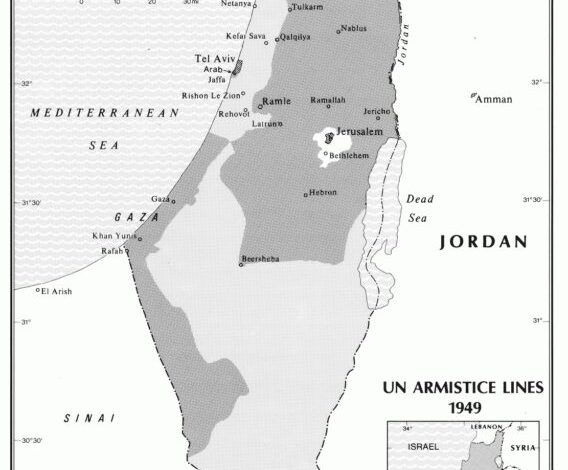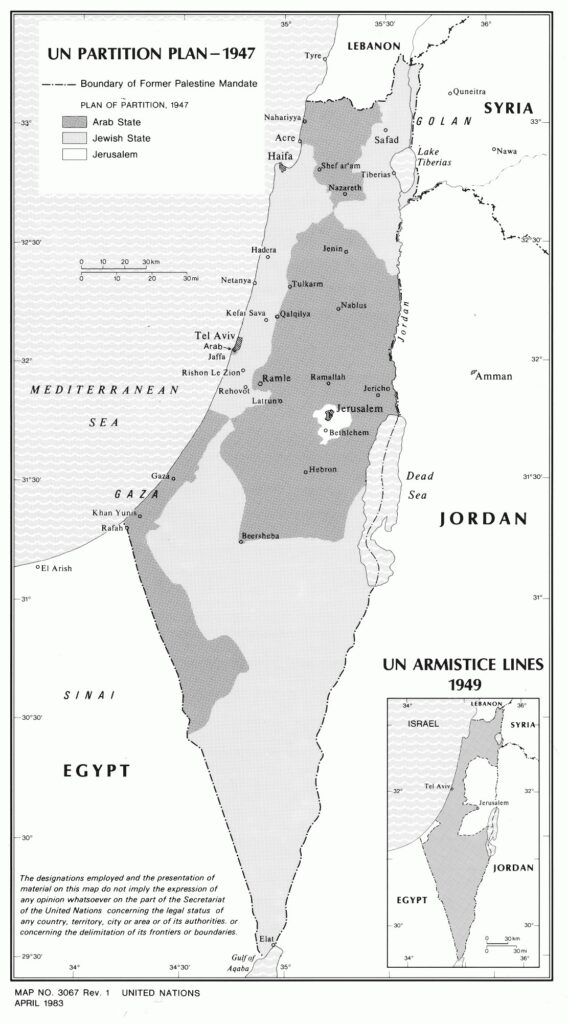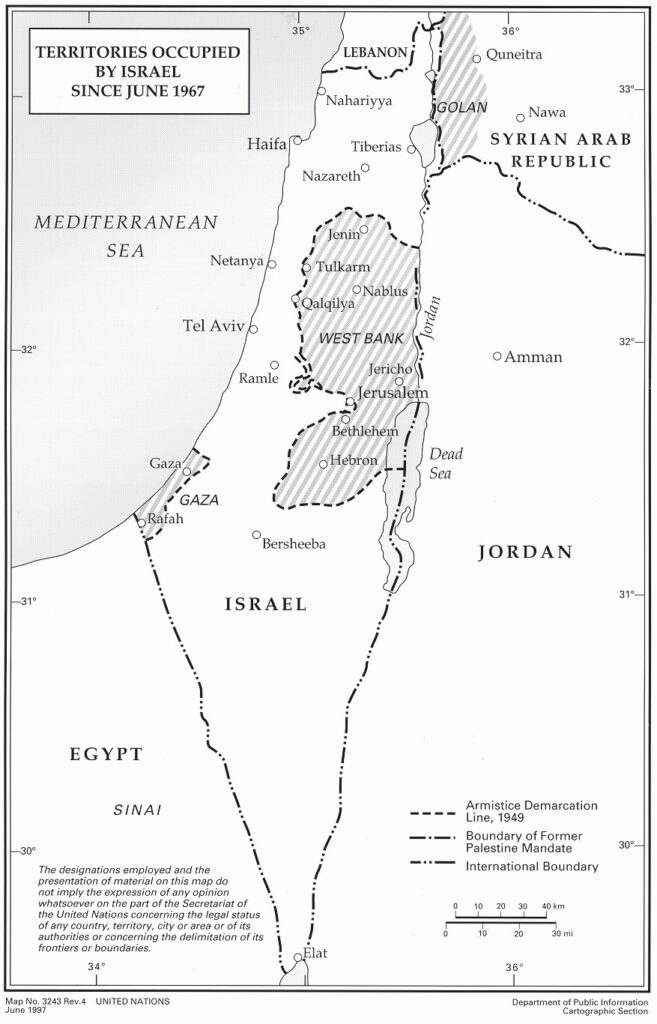
The recent Israel – Palestine conflict can be traced back to a history of more than 100 years. Israel is recognized as a Jewish democratic country today. Its existence dates back to 14th May, 1948 when it was separated from mandatory Palestine. Mandatory Palestine, as named under the British rule, was the combined area including present day Palestine, Israel, World Bank, Gaza Strip, Jordan and even a part of Egypt.
The Jews considered Jerusalem and the neighboring territories as their ancestral home land, it was their place of origin. However, when invaders such as Greeks, Romans , Ottomans and Egyptians were vying for control over the region, many Jews migrated to other parts of the world. However, the crusades and hatred showered on them made them realize that it was tough to gain global-acceptance and their only means of survival was to have their own country.
Though their homeland was now occupied majorly by Arabs, with a small Jewish minority; the britishers supported the Jews and gave them access to their homeland. During the same time Jews fled from Hitler – controlled Europe to different countries for survival. Many of them came back to Palestine. The Arab residents were not happy with this influx and a lot of clashes took place between the two groups.

Following the nationalist movement by the people of Palestine, the britishers decided to leave the country in 1948. The UN was approached to decide about the future of the independent nation. In 1947 the UN put forward a two- state theory with 57% of the land given to Jews and 43% of the land allotted to Palestinians.
Jerusalem, however, was a place of international significance, as it was considered holy by three religions- Islam, Christianity and Jews. Thus, it was decided that Jerusalem would remain under the control of UN.
When britishers left the country in May 1948, the Jews established their own country- Israel as per the UN mandate. The Arab countries were dissatisfied with this decision and did not want Palestinian Arabs to share their land with the Jews. Soon after Israel come into existence, the Palestinians with neighboring Arab countries attacked it.
This was the first Israel – Palestine conflict. The Palestinians were fighting because they were dissatisfied with the distribution and Jews were fighting for their only chance at survival. Miraculously Israel alone defeated around 5 Arab countries combined and retained its share along with control over western Jerusalem.
The map of the region changed again with the remaining land annexed by Jordan (West Bank) and Egypt (Gaza Strip). Jordan also took control over eastern Jerusalem. This meant that Palestinians officially had no place to go and were forced to take refuge in neighboring countries.
In 1967, Israel and Arab countries entered in a 6-day War, where-in Israel expanded its control not only over West Bank, Gaza Strip and eastern Jerusalem but also over Sinai Peninsula which was a part of Egypt. Israel promoted settlements in the newly acquired areas of West Bank and Gaza Strip making the “Two-state theory” more complicated to be implemented.
Government announced that citizens who could prove their property rights to areas which were taken away in 1948 will be given back their access no matter who lived in those properties. In 1979 the peace talks between Egypt and Israel were successful and Egypt became the first nation to recognize Israel as a country.

Meanwhile in 1964, the Palestine Liberation Organization (PLO) came into existence claiming to be representative of the Palestinian people with the aim of establishing a nation. In 1974 the PLO was recognized by the Arab League and the UN General Assembly as the representative of Palestinians.
From 1987 to 1993 there were uprisings against the Israeli occupation of Gaza strip and West Bank, termed as Intifada. This was followed by emergence of Hamas: a political militant group founded to liberate Palestine from Israeli occupation and to establish an Islamic state in the area. Some countries recognized Hamas as a terrorist organization because of its violent measures.
In 1992 Israel realized the claim of PLO for a separate country. Peace talks and agreements were signed in 1994 under the OSLO records. As a result, Gaza Strip and parts of West Bank were given to the Palestinians. West Bank was basically divided into three areas – controlled by Palestine, controlled by Israel and mixed governance. This complicated system of governance was adopted because of already existing settlements.
Extremists of both groups were not happy with the negotiations and wanted full control. Hamas, representing extremists within Palestine, boycotted the 1995 Palestine elections and made violent attacks on Israel. All attempts at negotiations failed, giving rise to Intifada 2 from 2000 to 2005. In 2006, Hamas won the Palestine elections by a small margin but this was followed by a war between the two parties of Palestine in 2007 known as the Gaza war which ended with PLO taking control of the West Bank region of Palestine and Hamas establishing control over the Gaza Strip.
Hamas is responsible for almost all the violent attacks between Israel and Palestine using bombs, missiles and suicide bombers. This led to blocking of Gaza by Israel and Egypt so that it is not supplied with more weapons. Israel has also established a very powerful safety mechanism known as the Iron dome which protects the country to a large extent from the bombings of Hamas.
After years of peace, the conflict was triggered again because of tensions between the two groups. Jerusalem which is the holy place for both the groups is under the control and security of Israel. Islam’s holy AL Aqsa Mosque and Jews’ Mount Temple and wailing wall are in the same compound. Thus, in order to maintain peace between communities Israel has the right to put restrictions over the movement in this region. Some restrictions were put in the Muslim’s holy month of Ramadan in April. This was added to by the controversial judgement about Sheikh Jarrah which may lead to eviction of Palestinian families. A major incident happened at the Al Aqsa Mosque after the controversial judgement delivered by the Supreme Court of Israel: Palestinians reacted by hiding stones in the mosque to attack the Jews and Israeli police. However the Israeli government had information about this and it’s army stormed the compound of the mosque using tear gas, rubber bullets and stun grenades. On 10th May, Jerusalem day, processions of Jews were reported to be using provocative slogans. All these events triggered Hamas. Hamas gave an ultimatum to the Israeli government to withdraw all it’s forces, if failing to do so, it would attack Israel. The situation escalated with bombings and casualties on both the sides. At least 232 Palestinians and 12 people in Israel have been killed in the violence.

Israel and Hamas group implemented a cease fire to end an 11-day conflict on 21 May. With events being triggered to such an extent, the only hope lies in the hands of both the parties to take a step back for the prevalence of peace in the region.
– By Shatakshi
The post Israel – Palestine Conflict: History and Latest Updates appeared first on The Economic Transcript.





